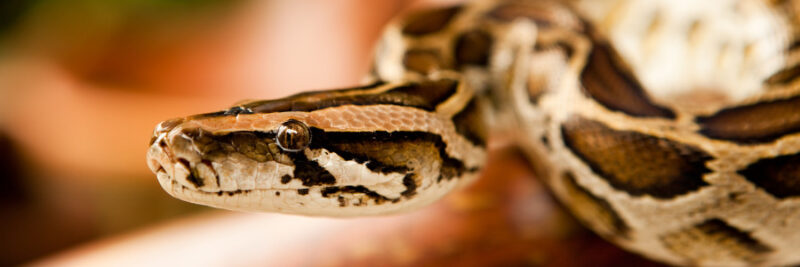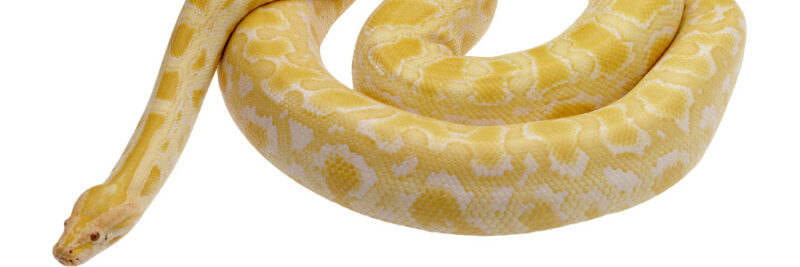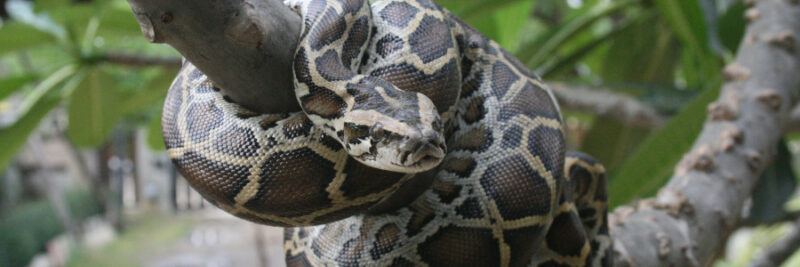Well howdy reptile lovers! Got a precious baby burm python on the way and feeling kinda clueless? No worries! I’m here to set you up for success caring for these magnificent giants-in-training as first timers. We’ll cover everything from getting feeding locked in, building trust through handling, plus setting up an enclosure suited to their unique needs. Sound fun? Let’s do this!
Now I won’t pretend these arm-thick noodles don’t demand serious commitment down the road. But start with the basics below and you’ll be off to a solid start! Let’s dig in.
Housing Your Burmese Python - Space to Stretch Out

Even little burms need big enclosures thanks to their heavy bodied terrestrial nature.
Aim for a starter home no smaller than:
- 3 foot baby – 41 quart tub
- 5 foot juvenile – 4x2x2 foot enclosure
- 7+ foot adult – minimum 6x3x3 foot cage
Burms relish floor space for leisurely roaming between basking sessions. Clutter the habitat with hiding caves, climbable branches and a large water tub for good measure.
Now let’s talk temp and humidity parameters…
Nailing Temperature and Humidity Goals

In their southeast Asian homes, temps stick around 80F plus humidity over 60%…
Recreate this in captivity by providing:
- 88-92F hot spot tapering down
- 78-80F ambient temp mid-enclosure
- Over 60% humidity maintained
Use under tank heating pads on thermostats, with supplemental ceramic bulbs as needed based on season. Don’t stress small daily fluctuations.
Feeding Your Young Burm Python

Your top priority: getting burms eating reliably from day one! Offer:
- Frozen/thawed rodents weekly
- Warm all meals to 100-105F
- Target prey girth equaling mid-body width
- Move up food sizes incrementally
Once burms pass 6 feet in length, consider monthly meals instead. Support lean muscle growth by providing an enclosure encouraging activity between digesting glorious rodent banquets!
Handling with Care and Confidence

Burms get a bad rap for nippy reputations. But move slowly and handle frequently from a young age and they warm up! Just follow these guidelines during sessions:
- Support the body fully when handling
- Move calmly and deliberately
- Limit handling after meals
- Never handle when in blue or shedding
Be patient through early squirminess! Consistency builds trust with these intelligent noodles.
Frequently Asked Questions About Caring for Beginner Burms
Let's wrap up by covering some key FAQs:
Always thaw frozen prey in the fridge overnight before warming slowly with hot tap water to 100-105F. Offer food items with long tongs and don't leave unattended until the snake is wrapping coils for constricting sized meals.
Add large branches, cork rounds, artificial foliage and clean tree stumps from reptile shows or gardens for climbing enrichment. Use upside down hides with single openings to tap into their security seeking instincts.
Aim for 65-75% humidity with 88-90F hot spots tapering to 80F ambient and 75ish on the cool end until burms pass 3-4 feet length. Then begin transitioning toward lower humidity levels and slightly cooler gradients long term.
Bites are absolutely avoidable through a slow acclimation process respecting the snake's need for security. Be wary of blocking escape routes and startling from behind. Support the body fully and avoid restraining neck/head area when handling to minimize stress.
Well I hope this intro guide has turned those new burm owner jitters into excited preparation! Remember that while husky adult sizes can intimidate, starting burms off right means smooth sailing for years to come. Think intentionally about each foundation block – the rest builds from there! Let me know if any other questions pop up and happy herping!

